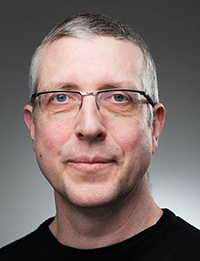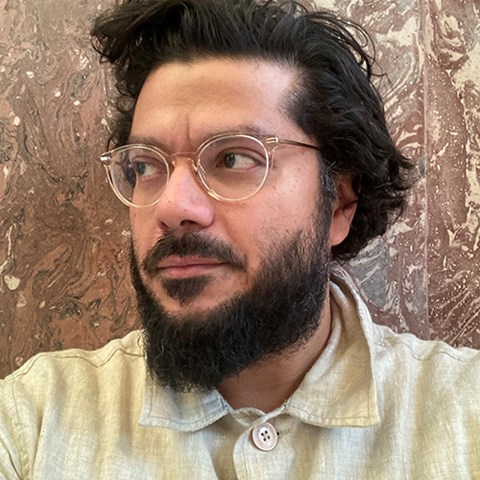Contact
 Nico Carpentier
Nico Carpentier
Extraordinary Professor at Charles University in Prague
Email: nico.carpentier@fsv.cuni.cz

Meet one of our partners, Daniel Urey who works as a process leader at Färgfabriken. The art gallery has had a mutual exchange with WP5 Art and media in the project Lyssna!, which is an exhibition in collaboration with Skellefteå Art Gallery and Virserum Art Museum.
My name is Daniel Urey and I work as a process leader at the art gallery Färgfabriken. Together with my colleague Karin Englund, I am responsible for the design and implementation of the programme Lyssna ("Listen!"). It is an art project that examines the borderland between facts and emotions, but which above all strives to link them together. Lyssna weaves together young people's perspectives and feelings on change, artists' work linked to climate issues, and research from different disciplines connected to environmental and climate questions. It is also important to emphasize that Lyssna is carried out in collaboration with our sister organizations, Skellefteå Art Gallery and Virserum Art Museum. An issue that is important as climate and how we experience climate change must be activated in several places in order for it to have legitimacy and impact. After all, it is a question of generating knowledge together about how we perceive the climate crisis and how we combat it.
At Färgfabriken, we became familiar with this concept a few years ago, because in our role as an art gallery, we are seeking to both inform and mobilize about the climate crisis. It is simply an issue that affects us in so many ways, both at an institutional level but also as citizens and humans. Once we came in contact with the concept of Environmental Communication, this provided a new conceptual framework for us as an art gallery to work within and in dialogue with different discourses about climate.
It was quite simple; we at Färgfabriken contacted SLU Uppsala when we became aware that they would lead a large project within the framework of Mistra Environmental Communication. Through SLU Uppsala, the contact was conveyed to Nico Carpentier, which led to very interesting conversations about both the concept, the role that art and art institutions can have, but also what happens if these institutions are outside this question. Luckily, Lyssna had started, this was January 2020, which provided a very clear workspace to start from.
Collaborating with researchers is both interesting and important for an art gallery. But of course it is a collaboration that must be based on reciprocity, i. e., where both actors care about jointly generating knowledge about our world. Färgfabriken has had a constant collaboration with researchers from different areas for a long time. Sometimes it is almost difficult to think of exhibitions and public programs without the researcher's participation when the content is generated and designed. But we also see that the creative work process is also something very much appreciated by researchers. Again, the reciprocity!
Collaborating with researchers is both interesting and important for an art gallery. But of course it is a collaboration that must be based on reciprocity, i. e., where both actors care about jointly generating knowledge about our world. Färgfabriken has had a constant collaboration with researchers from different areas for a long time. Sometimes it is almost difficult to think of exhibitions and public programmes without the participation of researchers in the generation and design of the content. But we also see that the creative work process is something that is very much appreciated by researchers. Again, reciprocity!
Very good, very educative and most likely a more integrated collaboration. That is, we move from getting in and out of each other's spheres, to a more integrated version. This is something very exciting!
 Nico Carpentier
Nico CarpentierExtraordinary Professor at Charles University in Prague
Email: nico.carpentier@fsv.cuni.cz